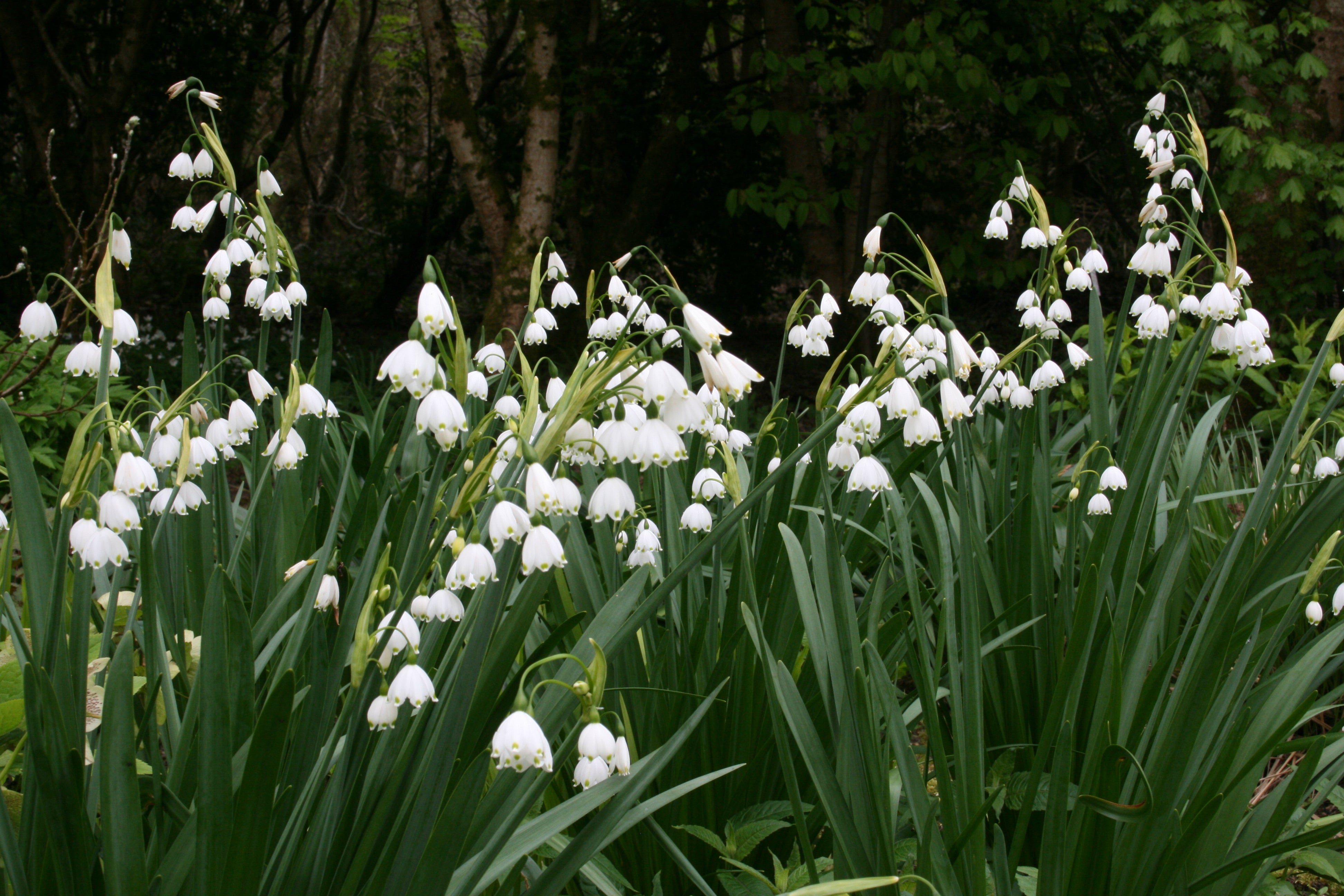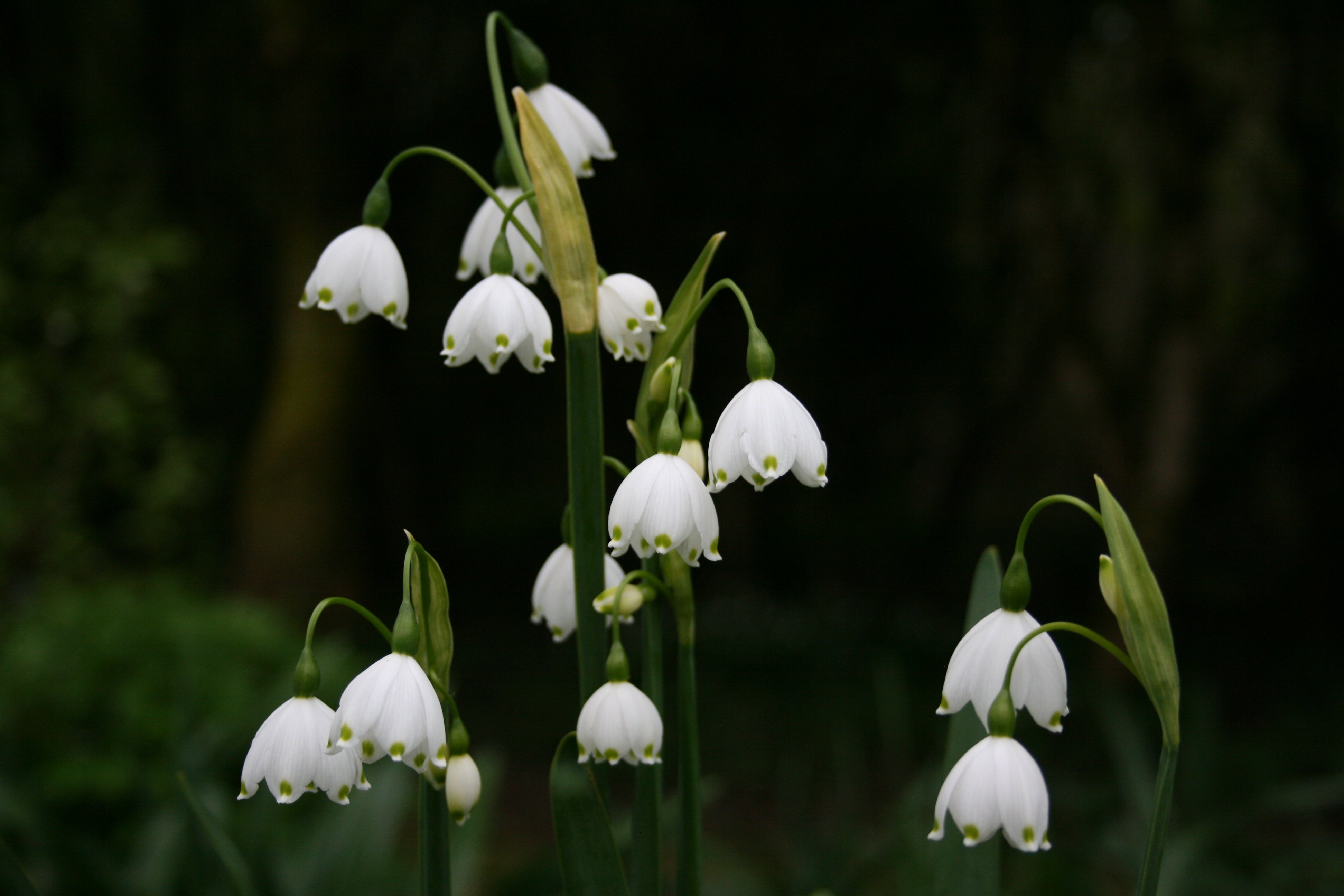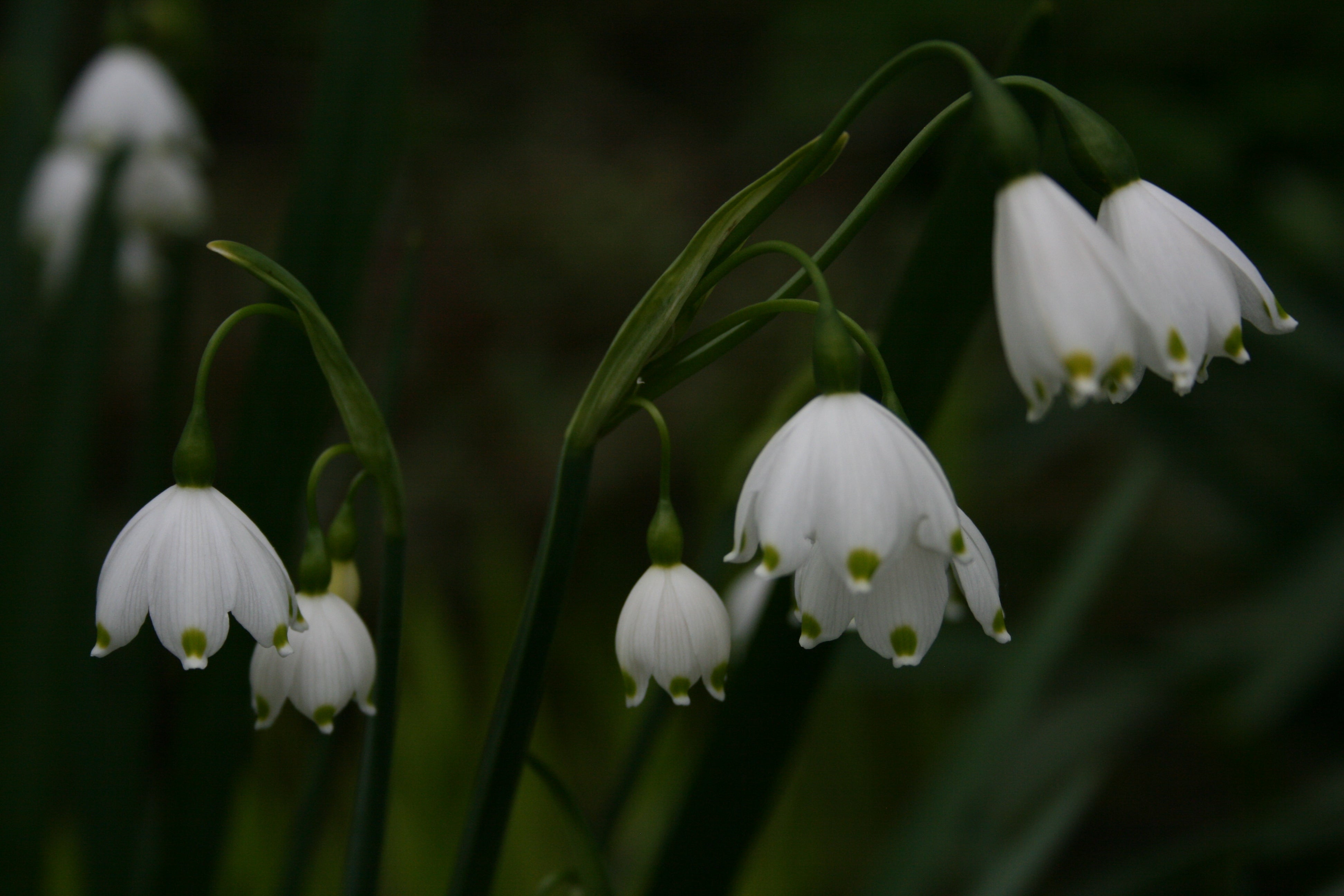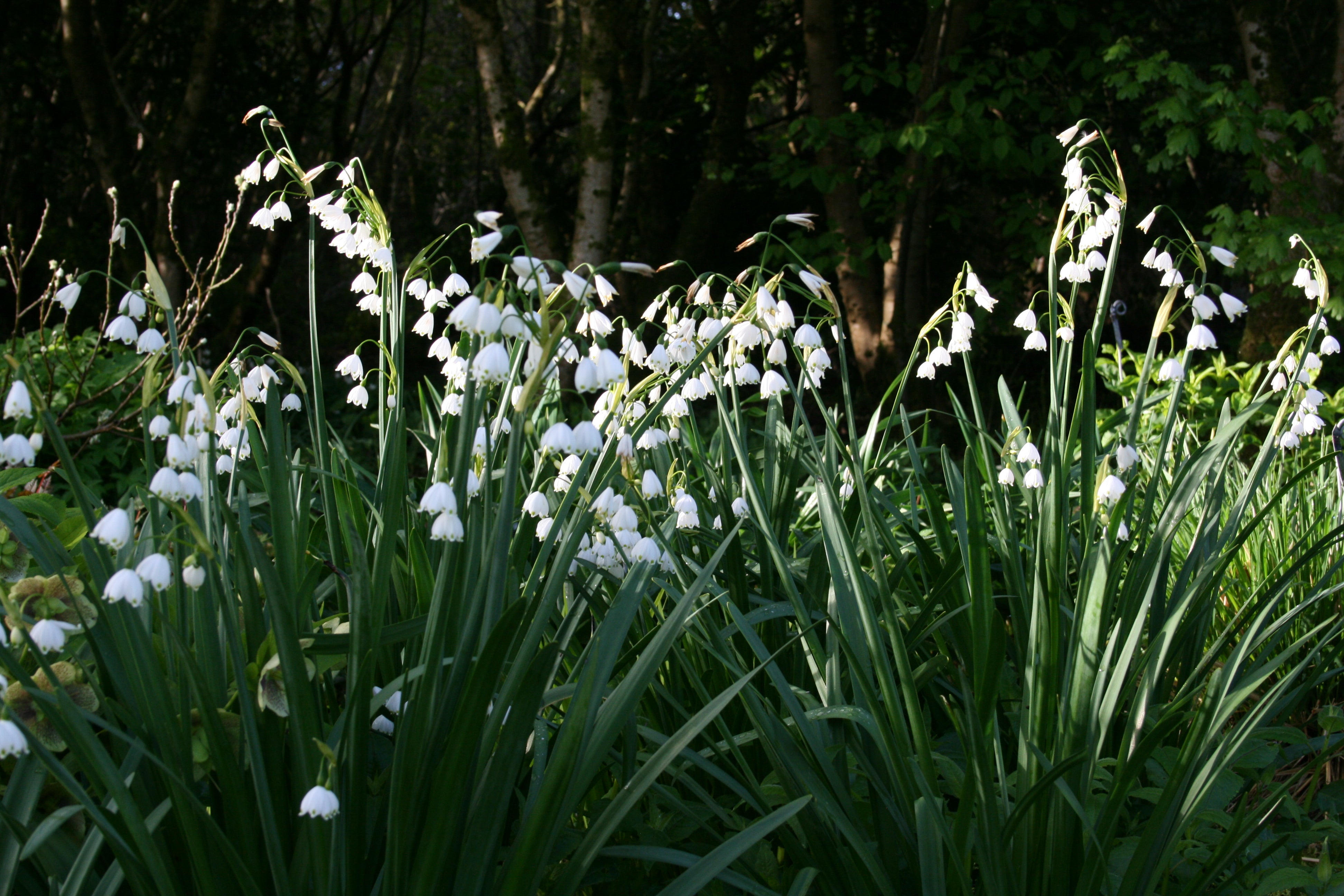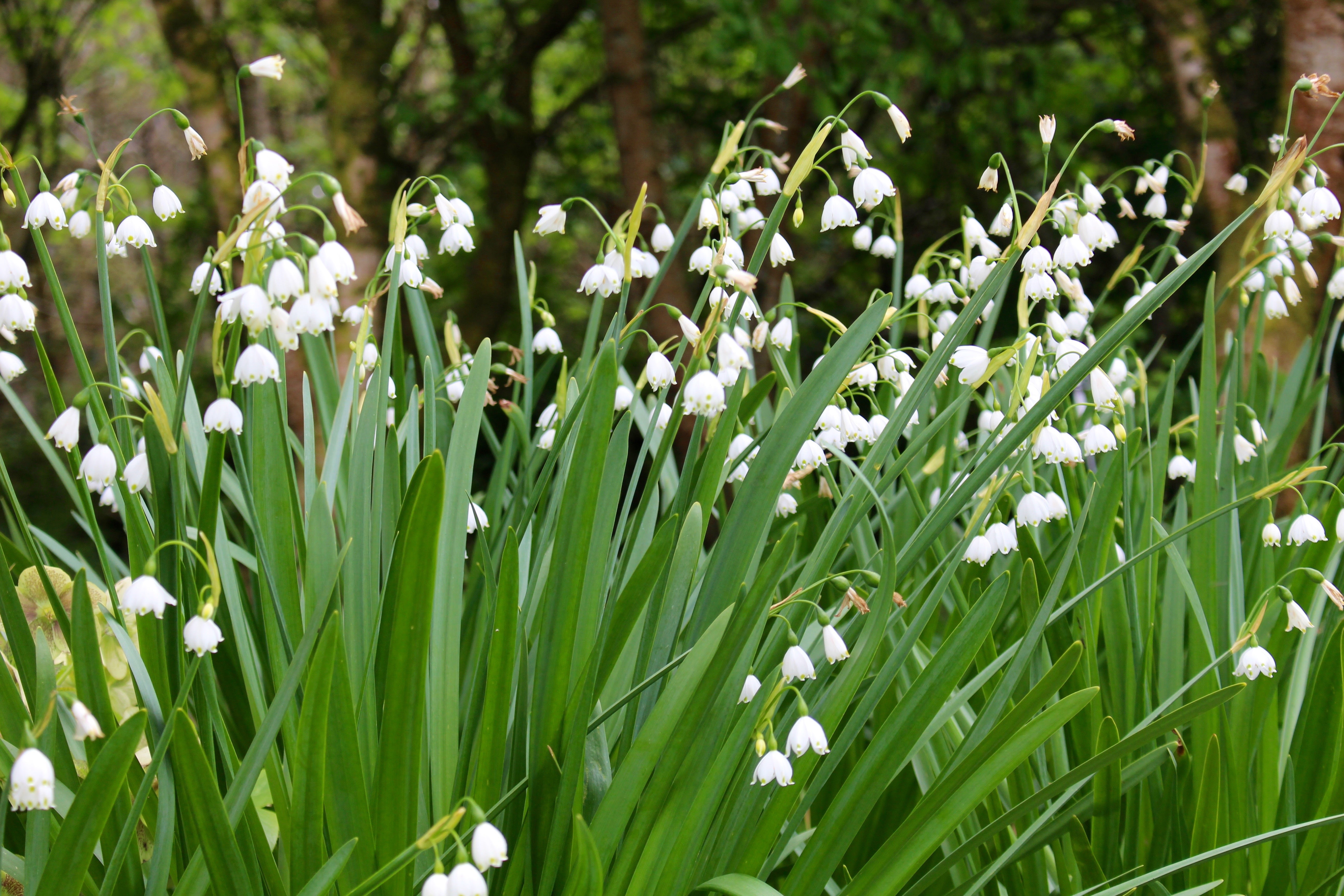Leucojum aestivum
Approx. 0.5 litre pot
About this cultivar:
Leucojum aestivum was first described by Carl Linnaeus in 1759. The epithet aestivum means of the summer, hence the common name 'Summer Snowflake'. The pendant flowers appear in late spring and are borne in umbels of usually three to five, sometimes as many as seven. Leucojum aestivum is native to most of Europe and is found in damp places, such as wet meadows, swamps, and ditches. Great to use in these areas but also great in and around woodlands.
- Position: Full sun, partial shade
- Soil: Almost any soil, grows well in Ballyrobert
- Flowers: March, April, May, June
- Other features: Woodland plant
- Hardiness: H7 - Hardy in the severest European continental climates (< -20°C), Fully hardy - grows well in Ballyrobert
- Habit: Clump forming
- Foliage: Deciduous
- Height: 30 - 60 cm (1 - 2 ft)
- Spread: 15 - 25 cm (0.5 - 0.8 ft)
- Time to full growth: 2 to 5 years
- Plant type: Herbaceous Perennial, bulb, woodland
- Colour: Green, white
- Goes well with: -
About this genus:
Leucojum (lew-ko-e-um) gets its name from a compound of Greek leukos white and ''violet referring to the colour and possibly fragrance of the flowers. Common names include snowbell, dewdrop, and St. Agnes' flower. It is a small genus of bulbous plants belonging to the Amaryllidaceae family - the same as the snow-drop (Galanthus). While Leucojum have six equal tepals (petals and sepals that are similar to each other), in Galanthus the three inner tepals are shorter and broader than the three outer tepals (impress your friends with that distinction - I remember the difference because the flower later in the year!).
As currently circumscribed the genus includes only two species, Leucojum vernum, the spring snowflake, and Leucojum aestivum, the summer snowflake or Loddon lily.
They are native to central and southern Europe, from the Pyrenees to Romania and western Russia, but they have been introduced and have naturalized in many other areas, including the east coast of North America. They have narrow, strap-like, dark green leaves. The flowers are small and bell-shaped, white with a green (or occasionally yellow) spot at the end of each tepal. They have a slight fragrance.
They grow in full sun or part shade in almost any soil which isn't too dry. They like moisture but not being waterlogged; in the wild they often grown beside rivers. Try them in a woodland setting - much like Galanthus (snowdrop).

